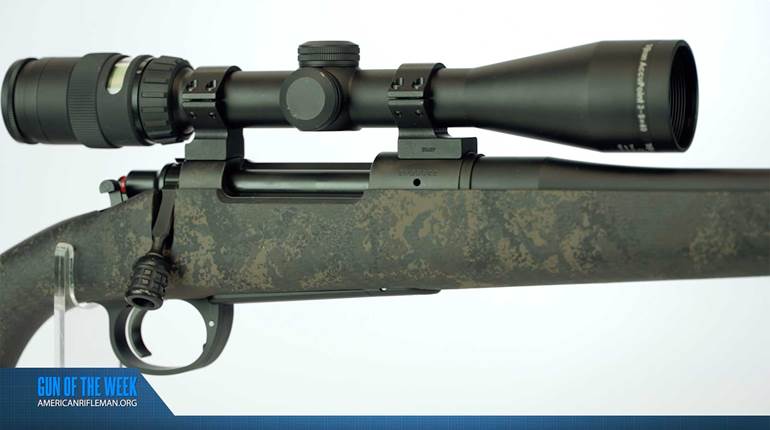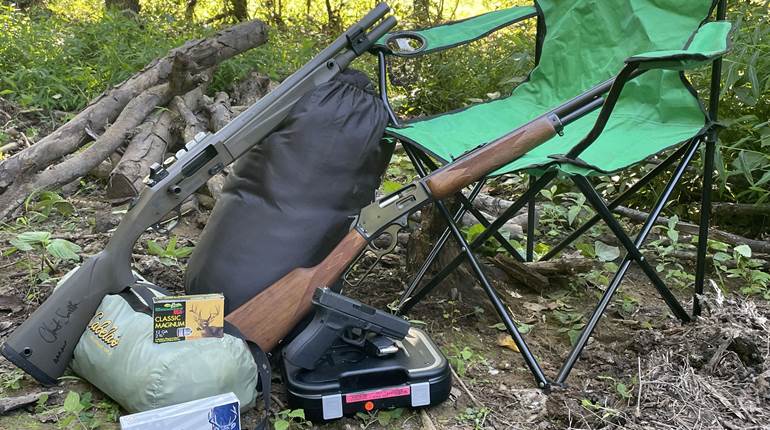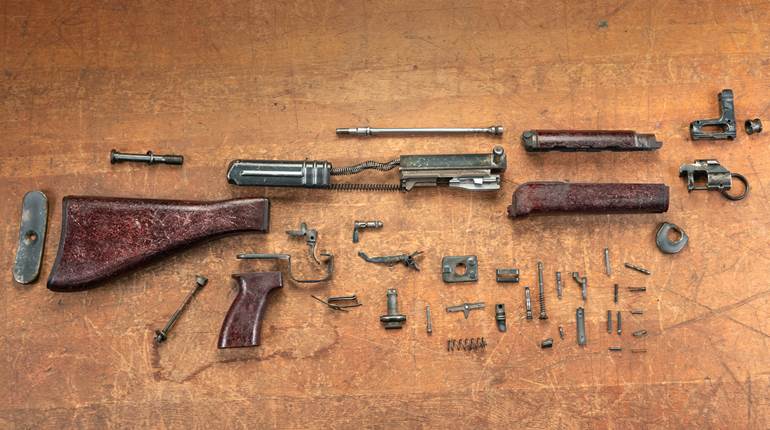
As detailed in Editor Emeritus John Zent's story, "40 Years Of .50-Caliber Authority," Ronnie Barrett started from scratch in the development of his now-legendary .50-cal. semi-automatic precision rifle. In 1982, Barrett began his project, and by 1984, he had not only a working rifle, but a rifle that he was trying to sell. Preserved in the American Rifleman Tech Files are the earliest marketing materials put out by Barrett Firearms, as the company attempted to find a market for its cutting-edge, semi-automatic .50-cal. rifle.

In the earliest marketing sheet put out by the company, Barrett extolled the virtues of its new rifle, highlighting that it could be "stored in less than 41 inches" and "feild (sic) stripped with no tools in less than 15 seconds." The virtues of Ronnie's novel design were also touted, as the marketing material detailed that the "tremendous recoil of the .50 caliber BMG cartridge is actually brought under control by utilizing a recoiling barrel and 7 lb. bolt carrier with a rotating three lug bolt...making this an extremely dependable firearm."

Attached to this marketing sheet was a price list, detailing that the new Barrett Firearms Model 82 could be had, with all the trimmings, for the bargain price of $2,600. Adjusted for inflation, in 2023, the equivalent price would be about $7,500, which isn't far off from current pricing.
By the early '90s, Barrett had caught the attention of the military, and several examples of its M82A1 rifle were deployed into combat, with one being used in an action that earned its operator the Navy Commendation Medal. On Feb. 24, 1991, USMC Cpl. Greg A. Gradwohl and his team "provided accurate long-range fire on both enemy troops and vehicles at a distance of 1600 meters." A day later, on February 25, Gradwohl again engaged an enemy mechanized brigade and "he again provided accurate long range fire on enemy troops and tanks."

More than two years later, Gradwohl wrote to Barrett Firearms, enclosing a copy of his Navy Commendation Medal citation. "During most of this conflict our usual M-40 (.30 cal.) was next to worthless due to the extreme range and lack of cover available," Gradwohl wrote. "I am not going to go into exact details of what my team did, however, I would like to say that without your M82A1 my Sniper Team would not have been nearly as effective as we were during this conflict."

Around the same time, the military commenced field-testing of Barrett's M82A1, with Company C, 3rd Battalion, 7th Special Forces Group concluding that it was "an accurate and reliable rifle that would enable this detachment to engage targets at ranges in excess of current weapons capabilities." They then asked for five of them.

By 1993, Barrett had added its Model 90 bolt-action bullpup rifle, which had a barrel length of 29" and an overall length of 45", a full foot shorter than the M82A1 equipped with the same barrel length. Optional accessories were also available, including a travel backpack that could store the rifle securely when broken down. More than 10 years after its first efforts, Barrett was highlighting the rifle's use in the military, its national stock number and highlighted that "with confirmed hits out to 1800 meters, the Barrett Model 82A1 is battle proven."







































